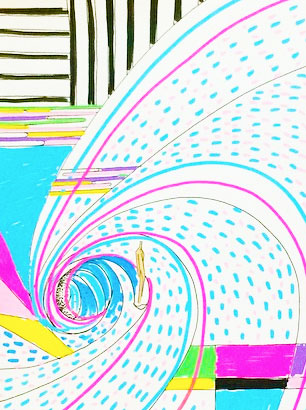Wabi-sabi represents a comprehensive Japanese world view or aesthetic centered on the acceptance of transience and imperfection. The aesthetic is sometimes described as one of beauty that is “imperfect, impermanent, and incomplete”. It is a teaching of the three marks of existence (三法印 sanbōin), specifically impermanence (無常 mujō), the other two being suffering (苦 ku) and emptiness or absence of self-nature (空 kū).
Characteristics of the wabi-sabi aesthetic include asymmetry, asperity (roughness or irregularity), simplicity, economy, austerity, modesty, intimacy, and appreciation of the ingenuous integrity of natural objects and processes.
Posca drawing on A4 paper

